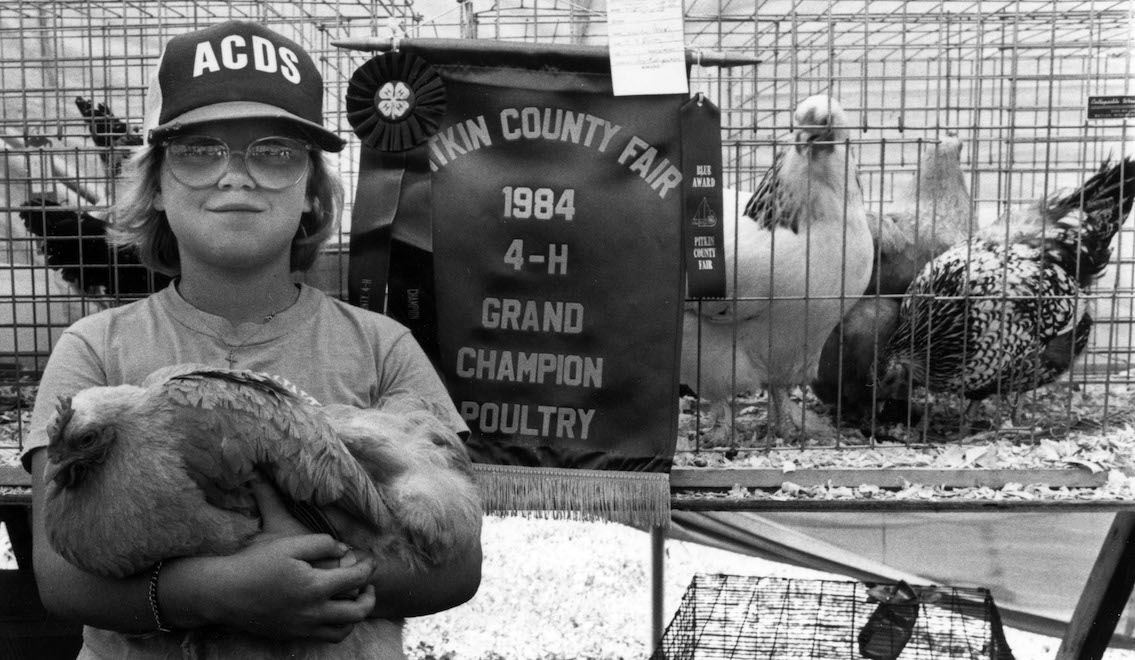Head, Heart, Hands, Health
“Summertime is 4-H time,” announced The Aspen Times in May 1985, “with kids all over the county raising sheep, steers and chickens, kids learning to sew and cook, kids learning to ride horseback, kids learning all about fishing and how to train their dog.”
4-H club origins go back to 1902, with the intent being to promote the positive growth of young people and connect public school education with the rural life experienced by many children in the United States. According to the University of California 4-H Youth Development Program website, children were also more accepting of new agricultural ideas than adults. So, “[w]hen Congress created the Cooperative Extension Service in the USDA in 1914, it included boys’ and girls’ club work. These soon became known as 4-H clubs—head, heart, hands, and health.”
In the upper Roaring Fork Valley, working ranches were the primary economic driver during the Quiet Years, the decades after mining slumped in the mid-1890s until skiing became an attraction in the late 1930s. Pitkin County Schools Superintendent Christine Eriksen, along with Doris Sheehan and Mrs. Clark Anderson, consulted with 4-H clubs in Glenwood Springs and Rifle to start their own. The first 4-H clubs in Pitkin County were launched in Aspen and Woody Creek in 1935, and Basalt followed shortly after.
In 1936, Eriksen announced that enrollment in a 4-H club could be used as credit for school, accommodating the realities of ranch life that took many kids out of the classroom. Activities ranged from sewing and cooking to raising livestock. In 1939, The Aspen Daily Times reported a record 11,955 4-H club members in Colorado.
By the mid-1950s, local 4-H projects were displayed at the annual rodeo, and a fair was held to weigh, judge, and auction off livestock. By the 1980s, extensive programs—run by teams of volunteer instructors—were funded by the U.S. Department of Agriculture, Colorado State University Cooperative Extension, and Pitkin County. 4-H projects, which had grown to encompass a wide variety of home economics skills and even a fashion show, had to be completed in time to exhibit at the Pitkin County and state fairs. The last Pitkin County Fair was held in August 1987 and the final local 4-H Exhibition Day in 1988.
“It is really a shame that the fair and 4-H went by the wayside,” says Casady Henry, Pitkin County’s 1987 and 1988 Grand Champion market lamb winner. “So many people have no idea how important agriculture has been to this county. I really do think it is incredibly sad that our local youth haven’t had the opportunity to participate in such a worthwhile program since the late ’80s. I loved it, and I have only good memories about my own participation.” ❧
Edible Traditions is produced by the Aspen Historical Society. For access to the full online archives, including more than 10,000 historic images, visit AspenHistory.org or call (970) 925-3721.





